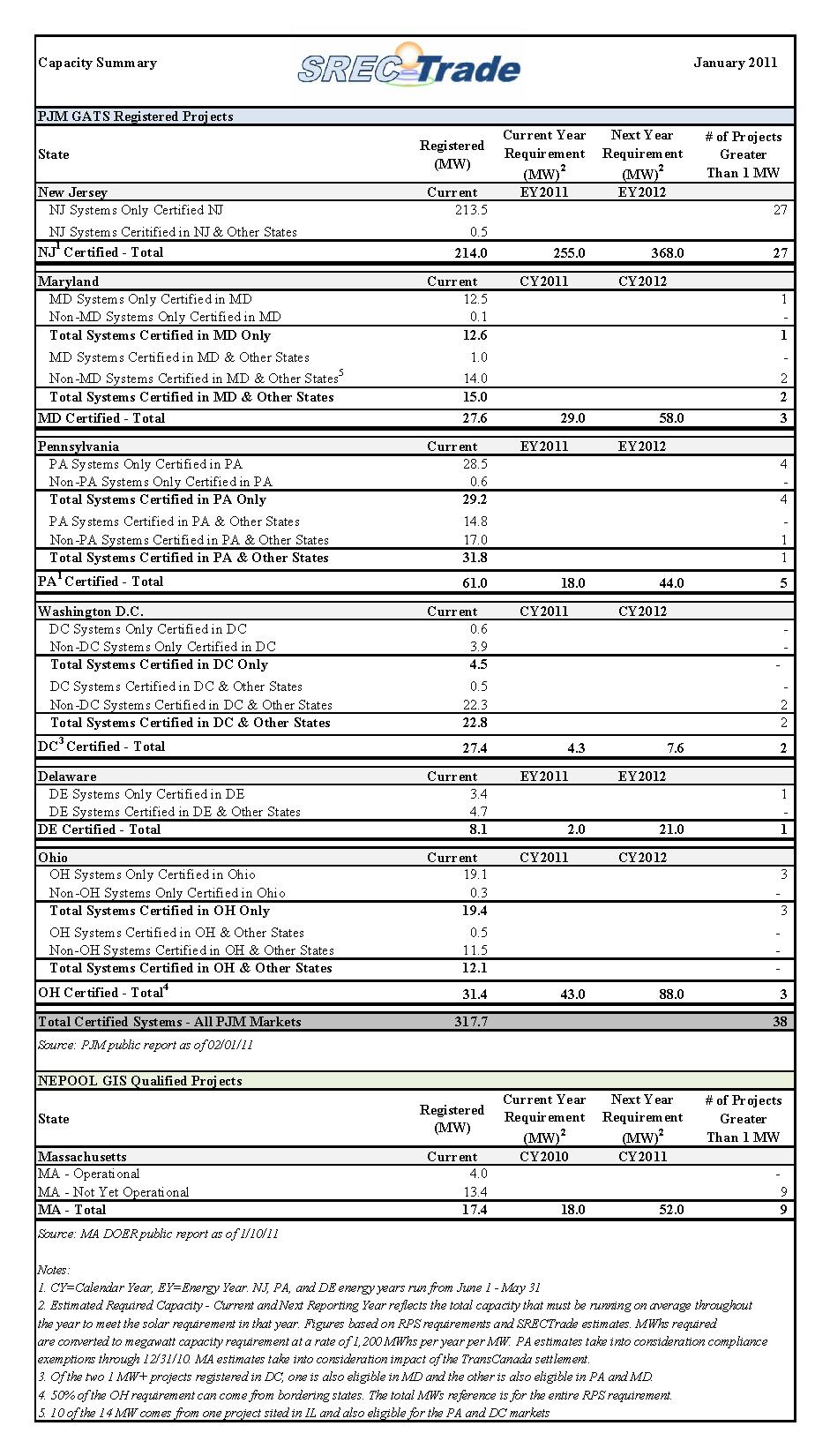The Delaware Public Service Commission approved the SREC Procurement Pilot Program on November 8th, 2011. This program will allow qualified solar energy system owners to sell their SRECs at a fixed price for the next 20 years.
The program will only be open to certain DE solar owners, for example, eligible facility owners must have received approval of their “Accepted Completed Solar System Interconnection Application” on or after December 1st 2010. Another requirement stipulates that the facility must not have received supplemental funding from a public source other than grants associated with the Delaware Green Energy Program “GEP”.
The number of SRECs to be procured is tiered according to the system size from which they are obtained. They will also be priced accordingly. Based on the requirements for June 2011 through May 2012, the numbers and price are
| Tier | Size (kW) | Number of SRECs | Percentage of Total SRECs | Price, 1st 10 years | Price, next 10 years |
| 1 | <50 | 2972 | 13.4% | $260 base, $235 alt+ | $50 |
| 2a | 50 – 250 | 2,000 | 9.1% | $240 base, $175 alt+ | $50 |
| 2b | 250 – 500 | 2,000 | 9.1% | Lowest Bid Price* | $50 |
| 3 | 500 – 2,000 | 4,500 | 20.4% | Lowest Bid Price* | $50 |
| 4 | >2,000 | 10,600 | 48% | Lowest Bid Price* | $50 |
+Alternative pricing for projects that received a GEP grant before December 10 2010.
* Prices for tiers 2b, 3 and 4 will be decided by competitive bidding amongst the applicants.
In the event of oversubscription for facilities in Tier 1 and 2A, systems will be eliminated via lottery, starting with systems enrolled in the equipment or workforce bonus program.
Payments will be made quarterly for Tier 1 and monthly for Tiers 2 and 3. The energy production must be measured by at least a standard, utility grade meter and online monitoring for Tier 1 systems, and a revenue grade meter with online monitoring for Tiers 2 and 3.
Facilities are obliged to deliver the number of SRECs as estimated for their system size when they apply. The Sustainable Energy Utility is obliged to purchase up to 110% of the estimated SRECs, but may choose not to purchase any additional surplus SRECs.
This program will likely commence this winter or spring, and SRECTrade will be supporting this program for all of our installers and their customers. Look out for a future email regarding the SREC Pilot Program.
Tweet



